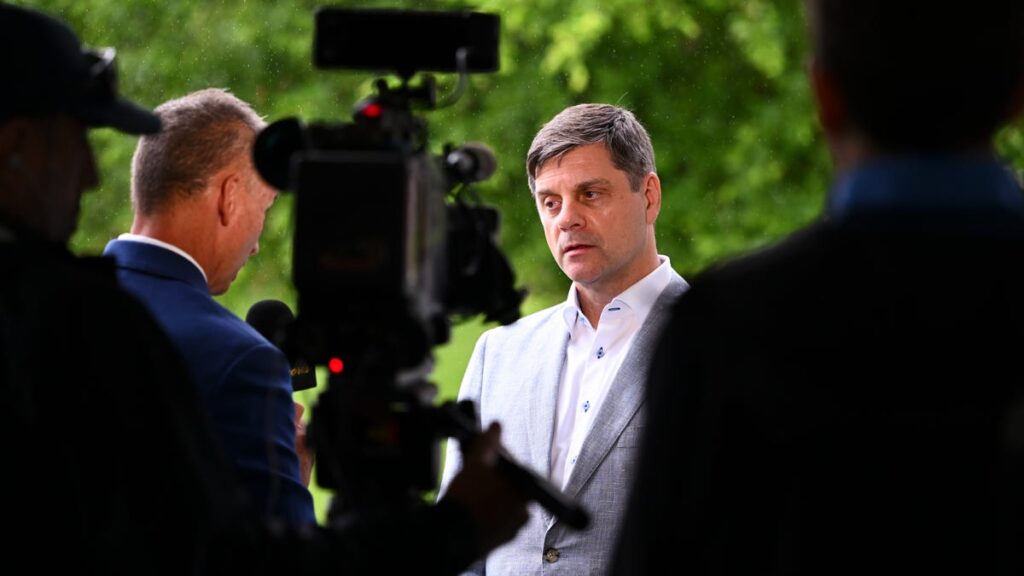As incoming leaders of organizations that face significant challenges, Brian Rolapp and Craig Kessler — respectively, CEO of PGA Tour Enterprises and commissioner of the LPGA Tour — will, by necessity, take a heuristic approach to problem solving, choosing pragmatic solutions since perfect options don’t exist.
Rolapp’s tasks include stalled negotiations with the Public Investment Fund of Saudi Arabia, right-sizing the schedule and eligibility amid player opposition, and delivering a return for the investors of Strategic Sports Group, who hand-picked him for the job. And Kessler … well, he’ll have lots of burdens when he assumes his role in a couple of weeks. Too little revenue, too few resources, securing sponsors, adjusting schedules, monetizing media rights, all while the Saudis lurk for a chance to leverage the LPGA for sportswashing and players who’d happily allow them to do so. Hazarding a guess at the landscape either man will preside over a couple of years hence calls to mind a pithy line from the late management theorist Peter Drucker, who likened trying to predict the future to driving down a country road at night with no lights while looking out the back window.
But Drucker also said that the best way to predict the future is to create it. While Rolapp and Kessler will work their own sides of the street, there’s a way in which they can be useful to each other.
Since Rolapp is only nominally a golfer and Kessler is barely out of short pants by the silvery standards of golf administrators, neither may be familiar with the World Cup, an artifact of a bygone era that has long languished in the vaults of Ponte Vedra. A two-man team competition, it began as the Canada Cup in 1953 and for a half-century was a missionary vehicle for the sport, contested in disparate places like Argentina, Thailand, Venezuela, Greece, the Philippines, and China, and in underdeveloped regions like South Carolina and Florida. It was staged sporadically after 2009, and not at all since 2018. (A women’s version existed from ’05-’08).
The World Cup is technically owned by the long-dormant International Golf Association, but it gave the PGA Tour perpetual license to operate the event. In a ranking of Rolapp’s priorities, resurrecting the World Cup probably ranks below taking emergency lessons at the TPC Sawgrass Performance Center but well above replying to the latest filing by Justine Reed’s attorney of the week. But therein lies an opportunity. “My goal as CEO is to honor golf’s traditions but not be overly bound by them,” he wrote in an open letter on the day of his appointment. The World Cup has tradition, albeit largely forgotten, but it has potential, if the Tour chooses to rethink the value of a shelved asset.
A template worth imitating was on display last month at Congaree Golf Club in the Palmer Cup, which pits the best college players in the United States against their International counterparts. Unlike other team events, the Palmer Cup has men and women partner in an alternate shot format. Thus, Tour-bound Jackson Koivun played with Kiara Romero, and World No. 2-ranked amateur Mirabel Ting paired with Justin Hastings, the Latin America Amateur champion. The World Cup should be reimagined as a mixed team tournament with the PGA and LPGA tours’ best playing best ball and alternate shot formats.
The advantages for the LPGA Tour are obvious. Instead of continuing a chicken/egg debate about how to draw new eyeballs to the weekly product, it presents a fresh product to new eyeballs by partnering with the guys on a prominent stage that isn’t a silly season hit and giggle. Doing so can help organically grow fan interest and support for women’s golf by giving it equal billing in a competitive environment. (It would also demolish the lingering prejudice — still popular among the crypto-incel fraternity — that the skills of the top women can’t compare to those of the men.)
But this wouldn’t be just a feel-good giveaway for the PGA Tour.
Rolapp has global ambitions, and Ponte Vedra needs products that will aid international expansion into markets both robust and emerging. The Presidents Cup won’t serve that end. It’s held too infrequently, too many top players are ineligible, too few top players are willing to travel far afield in the fall, it’s too much a facsimile of the more popular Ryder Cup, its venues are too commercially safe and convenient, with the last international match held within walking distance of the U.S. border. Having countries field teams comprised of their best man and woman in a reinvented World Cup — operated by the PGA Tour, the LPGA and the DP World Tour — would be a more promising, progressive and portable vehicle for international growth in golf’s less traveled precincts, and create opportunities to stage adjacent events around the tournament. And as a fresh new product, it might also enable Rolapp to test the market for streaming services globally.
There are challenging times ahead for Rolapp and Kessler, and they’re certainly not obligated to elevate each other’s business. But there exists an opportunity to do so while advancing their individual agendas and improving the lot of the entire sport. They ought to heed Drucker’s caution that the greatest danger in times of turbulence isn’t the turbulence itself, but the tendency to act with yesterday’s logic.
Read the full article here


